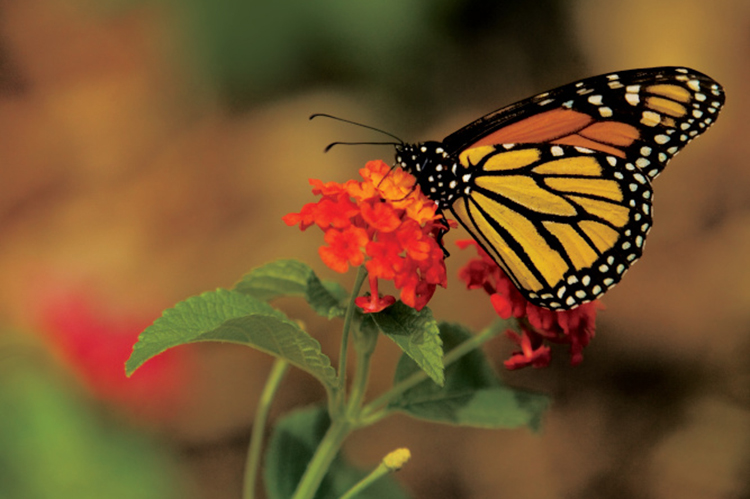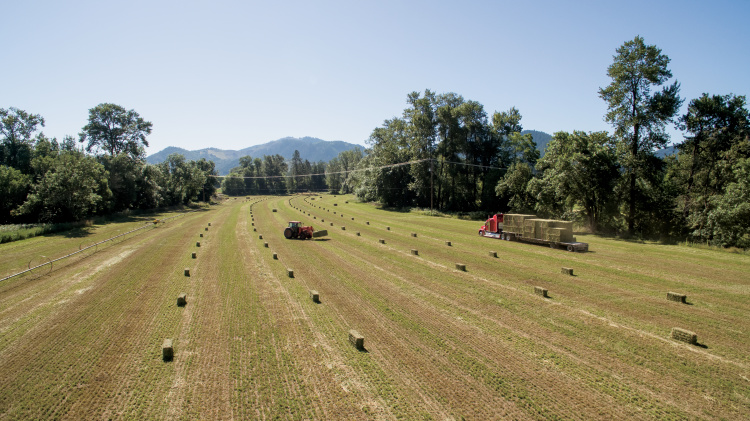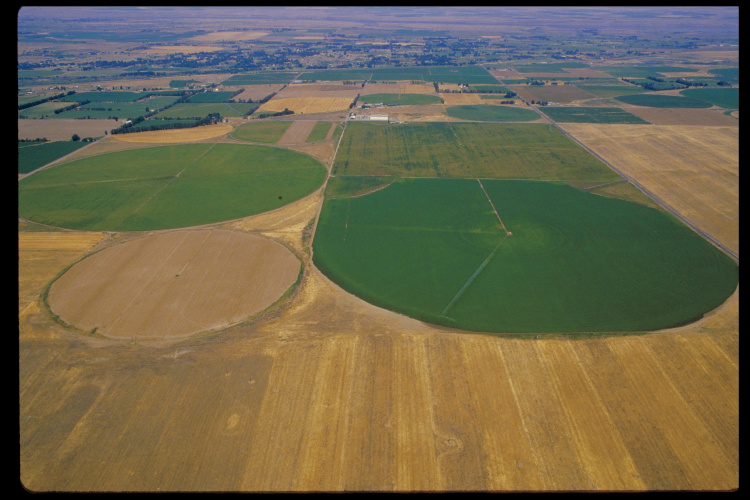Home > Oregon > Oregon Environment > Kenagy Family Farm Works Hard to Protect Wildlife
Kenagy Family Farm Works Hard to Protect Wildlife

Oregon farmers are a diverse bunch, growing 220 crops using different methods, and Alana Kenagy describes her family’s operation as an “unconventional conventional farm.”
Kenagy Family Farm near Albany in the Willamette Valley includes 450 acres, but crop production takes place on about 325 acres. The family chooses not to farm more than 100 acres, leaving it instead as riparian habitat along the Willamette River or set aside for native plants. They leave seasonal waterways and wetlands to their own devices.
On much of their farm, the Kenagys grow sweet corn and beans on contract to a vegetable processing co-op, but they also raise a variety of seed, legumes, buckwheat, oats, asparagus and native plant seed for the restoration market.
They encourage and restore native plants and wildlife habitat, providing food and shelter for birds and beneficial insects such as pollinators. Alana Kenagy and her brother, Darrell, have joined their parents, Peter and Tina Kenagy, in operating a farm that supports them and is also sustainable.
Alana Kenagy explains their goal, “To steward a sizable chunk of land so that it is both an ecologically regenerative habitat and a financially sustainable farm.”

Sustainability a Pillar for Oregon Producers
The Kenagys aren’t alone. A tremendous number of Oregon farmers and ranchers consider themselves the first line of defense against environmental degradation. They take pride in providing for diverse landscapes and work to make their agricultural operations compatible with wildlife, habitat and streams.
Southeastern Oregon comprises 13 percent of the Priority Area of Conservation for Greater Sage Grouse – an anchor for the 11 western states that provide sage grouse habitat. In fact, ranchers across eight Southeast Oregon counties have committed to science-based conservation agreements to protect 1.4 million acres of private land to care for the habitat of the Greater Sage Grouse and other wildlife species.
The U.S. Fish and Wildlife Service considered putting the Greater Sage Grouse on the endangered species list. A potential listing was worrisome to many in the 11 western states where the bird lives. Rural residents in particular anticipated complicated new regulations or restrictions. While sage grouse range includes vast acreage of public Bureau of Land Management and U.S. Forest Service land, they also nest on private land used for livestock grazing, hunting, recreation and more.
Oregon cattle ranchers found a unique collaborative solution with the federal Fish and Wildlife Service. In 2010, the agency began working with county Soil and Water Conservation Districts to develop habitat conservation agreements on private land.
Harney County Soil and Water Conservation District, in the southeast corner of the state, became the model for the West. Oregon landowners voluntarily agreed to conservation measures to reduce the loss and fragmentation of sagebrush.
In 2015, citing the unparalleled conservation efforts and agreements as a major factor, the U.S. Department of the Interior announced the bird would not be listed as threatened or endangered.

Looking for Solutions
Wildlife doesn’t recognize the lines between private, state and federal lands. Collaboration is a key tool in conservation efforts.
The USDA’s Natural Resource and Conservation Service works with Oregon landowners to protect habitat essential to migrating pintail ducks, mule deer, Fender’s blue butterflies and Columbia white-tailed deer.
In some cases, farmers create conservation easements by working with government agencies or with nonprofit land trusts. Easements allow farmers to continue owning and farming their land but may limit development. The end result is permanent protection of land that has key habitat for wildlife.

Making the Commitment
The Kenagys use conventional methods in some aspects of farming, such as controlling weeds with mechanized cultivation in addition to pulling weeds by hand. Decisions to keep some land out of agricultural production are made on a “site-specific and site-appropriate” basis, Alana Kenagy says.
For example, the family might decide not to plant a tight corner of a field where it is difficult to turn a tractor. The use of efficient center-pivot irrigation systems essentially turns some fields into circles, with the remainder available for use as native habitat.
“Those areas become productive in a different way,” Kenagy says. “Ecologically productive rather than economically.”
The commitment to habitat conservation and collaboration crosses many sectors of agriculture. As Harney County cattle rancher Tom Sharp memorably put it, “What’s good for the bird is good for the herd.”



